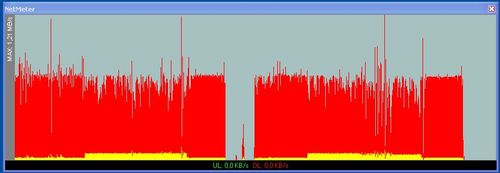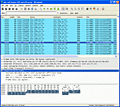I've been speculating recently how voice calls could work in next generation 3GPP LTE networks. The politically and technically foreseen way is IMS, the IP Multimedia Subsystem, and a service platform running on top of IMS such as the IMS Centralized Services (ICS). ICS is quite promising as it includes a solution to bring GSM only handsets without any IMS extensions into an overall voice solution and can hand-over voice calls from LTE to GSM when leaving the coverage area. The major drawback of ICS is its complexity and its anyone's guess when we will see this in mobile devices for the general public.
In the meantime, there has been some support in 3GPP to investigate a different solution: How to extend the current circuit switched voice service of GSM to LTE. In 3GPP a number of companies started writing some proposals, which were gathered in 3GPP TR 23.879. In this paper, the main proposal is to connect the Media Gateway part of the Circuit Switched Mobile Switching Center (MSC) to the packet core and give the the MSC Server direct access to the Mobility Management (MME) Entity of the Access Gateway to the LTE Radio network.
This approach completely circumvents the IMS and reuses all upper signaling protocols already known from GSM. Only the lower protocol layers are replaced by TCP/IP. For the voice call itself, all higher layers of the voice transmission protocol are foreseen in the technical report to be kept, while the lower layers would be replaced by TCP/UDP/RTP between the mobile device and the MSC's media gateway.
Handovers would be supported via the interface between the LTE Access Gateway and the evolved MSC (eMSC). When the base station signals that a handover to a 2G GSM cell is required, the Access Gateway informs the evolved MSC via this interface of the handover and the intended target cell. The eMSC can then prepare a circuit switched channel in the 2G or 3G network and respond to the LTE Access Gateway with the necessary details which are then given to the mobile device by the base station in the handover command.
From a development point of view such an approach is much simpler than installing a full IMS system and put ICS on top. Also, all services available today, including SMS, are instantly available, without any further development.
Here are the main developments that I think would be required for such a solution:
- Mobile device: The stack for voice telephony must be enhanced to put the signaling and voice data a packet switched connection while the device is attached to LTE. Also, the handover code must be enhance to not only support 2G to 2G, 3G to 2G, 2G to 3G handovers but also 4G to 2G or 3G and vice versa.
- LTE Base station: The software needs a small enhancement to transparently forward the CS handover information it receives from the Access Gateway to the mobile device.
- LTE Access Gateway: The MME in the Access Gateway needs to be enhanced to report a handover to the eMSC and to wait with the handover until the eMSC gives the go-ahead. Also, it would have to forward a transparent data container with information about the resources allocated in the circuit switched network to the mobile device.
- MSC: Would have to be enhanced to communicate via DTAP over IP (instead of ATM, IuCS, BSSMAP and BSSAP) and to perform handovers from 4G to 3G or 2G and vice versa. Further, instead of assigning circuit switched traffic channels it would have to interact with the packet core to assign the correct QoS attributes which will ensure a smooth call and sets the scene for the MME to signal a 2G handover to the eMSC.
For further details, including how to deal with roaming subscribers, have a look at the technical report.
All in all, I would say that the enhancements required for 4G handovers are far less complicated than those required at the time to implement 3G to 2G handovers when UMTS was specified.
From a technical point of view, this architecture has the drawback that voice calls to mobile clients would continue to use a protocol other than SIP, which is the dominant protocol in the fixed line VoIP world. The MSC and the Media Gateway would in effect act as a signaling protocol converter and, in case the call is handed over to a circuit switched 2G connection, as a voice codec transcoding function. Considering the comparatively small enhancements required in the handset and the newtork compared to a full IMS/ICS solution, this architectural imperfection could well be worth it.
From an IMS/ICS point of view the proposed solution looks of course "stone age". It would only support voice calls, i.e. no multimedia sessions, would not support several devices per account, no sessions, no instant messaging, you name it, just pure and simple voice and SMS (but with all the supplementary services that have been developed over the past 30 years!).
BUT: Due to its handover capabilities to 2G GSM and and seamless use over 2G, 3G and 4G networks, it might be the killer VoIP solution for operators to beat Internet based VoIP services (think Skype, etc) which are also pushing into wireless networks and devices today.
Strangely enough, the current work plan lists the technical report as "moved to Release 9" (look for "FS on CS Domain Services over evolved PS access"). I am not sure what that means but it sounds like it didn't meet the love of enough companies represented in 3GPP.



